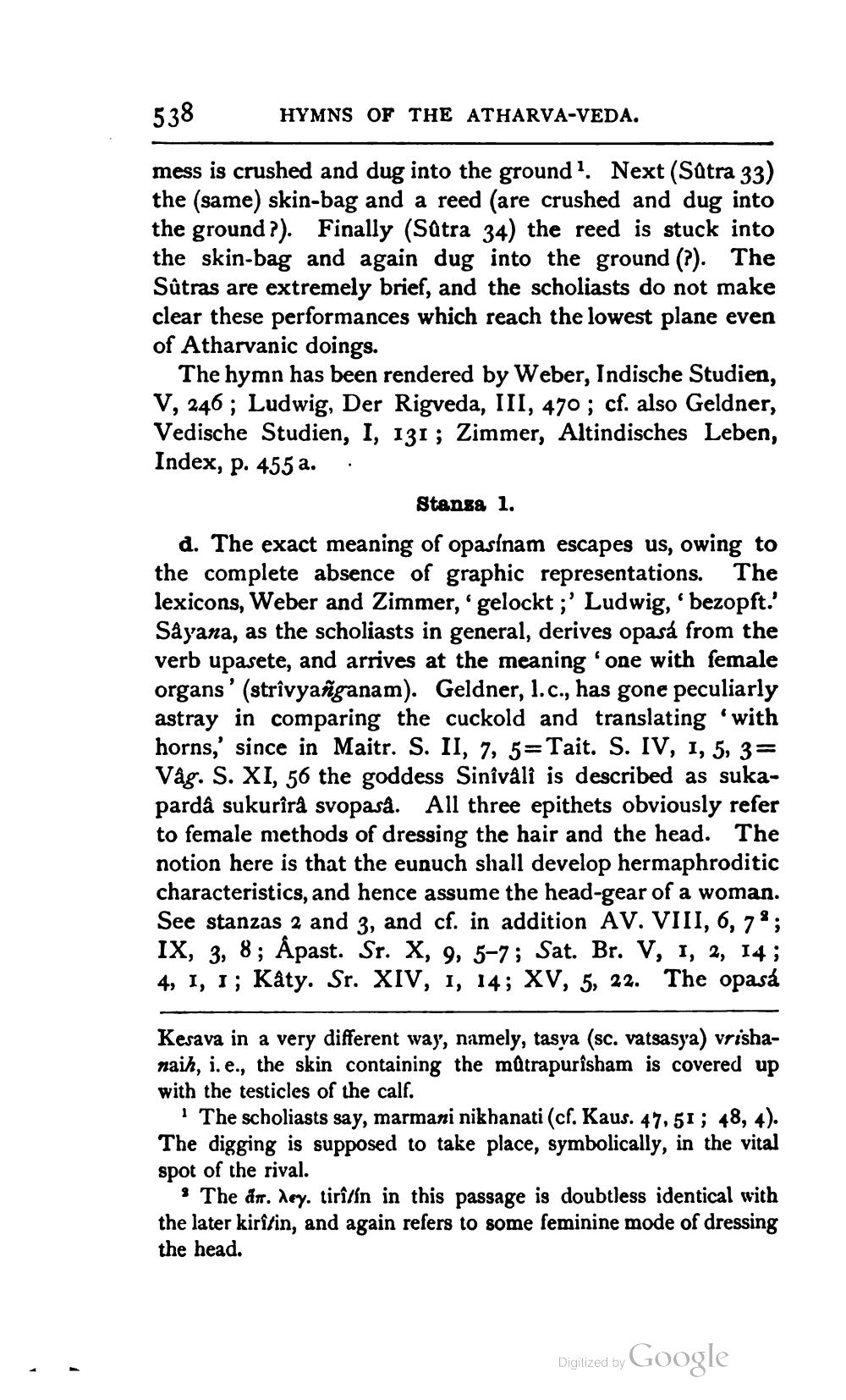________________
538
HYMNS OF THE ATHARVA-VEDA.
mess is crushed and dug into the ground. Next (Satra 33) the (same) skin-bag and a reed (are crushed and dug into the ground?). Finally (Satra 34) the reed is stuck into the skin-bag and again dug into the ground (?). The Sûtras are extremely brief, and the scholiasts do not make clear these performances which reach the lowest plane even of Atharvanic doings.
The hymn has been rendered by Weber, Indische Studien, V, 246 ; Ludwig, Der Rigveda, III, 470; cf. also Geldner, Vedische Studien, I, 131 ; Zimmer, Altindisches Leben, Index, p. 455 a. .
Stansa 1. d. The exact meaning of opasínam escapes us, owing to the complete absence of graphic representations. The lexicons, Weber and Zimmer, 'gelockt;' Ludwig, 'bezopft.' Sayana, as the scholiasts in general, derives opasá from the verb upasete, and arrives at the meaning 'one with female organs' (strîvyañganam). Geldner, 1.c., has gone peculiarly astray in comparing the cuckold and translating with horns,' since in Maitr. S. II, 7, 5=Tait. S. IV, 1, 5, 3= Våg. S. XI, 56 the goddess Sinîvali is described as sukapardä sukurîrå svopaså. All three epithets obviously refer to female methods of dressing the hair and the head. The notion here is that the eunuch shall develop hermaphroditic characteristics, and hence assume the head-gear of a woman. See stanzas 2 and 3, and cf. in addition AV. VIII, 6, 7'; IX, 3, 8; Åpast. Sr. X, 9, 5–7; Sat. Br. V, 1, 2, 14; 4, I, I; Kåty. Sr. XIV, 1, 14; XV, 5, 22. The opasá
Kesava in a very different way, namely, tasya (sc. vatsasya) vrishanaih, i. e., the skin containing the mûtrapurisham is covered up with the testicles of the calf.
The scholiasts say, marmani nikhanati (cf. Kaus. 47,51 ; 48, 4). The digging is supposed to take place, symbolically, in the vital spot of the rival.
* The dr. dry. tirîtín in this passage is doubtless identical with the later kiritin, and again refers to some feminine mode of dressing the head.
Digitized by Google




